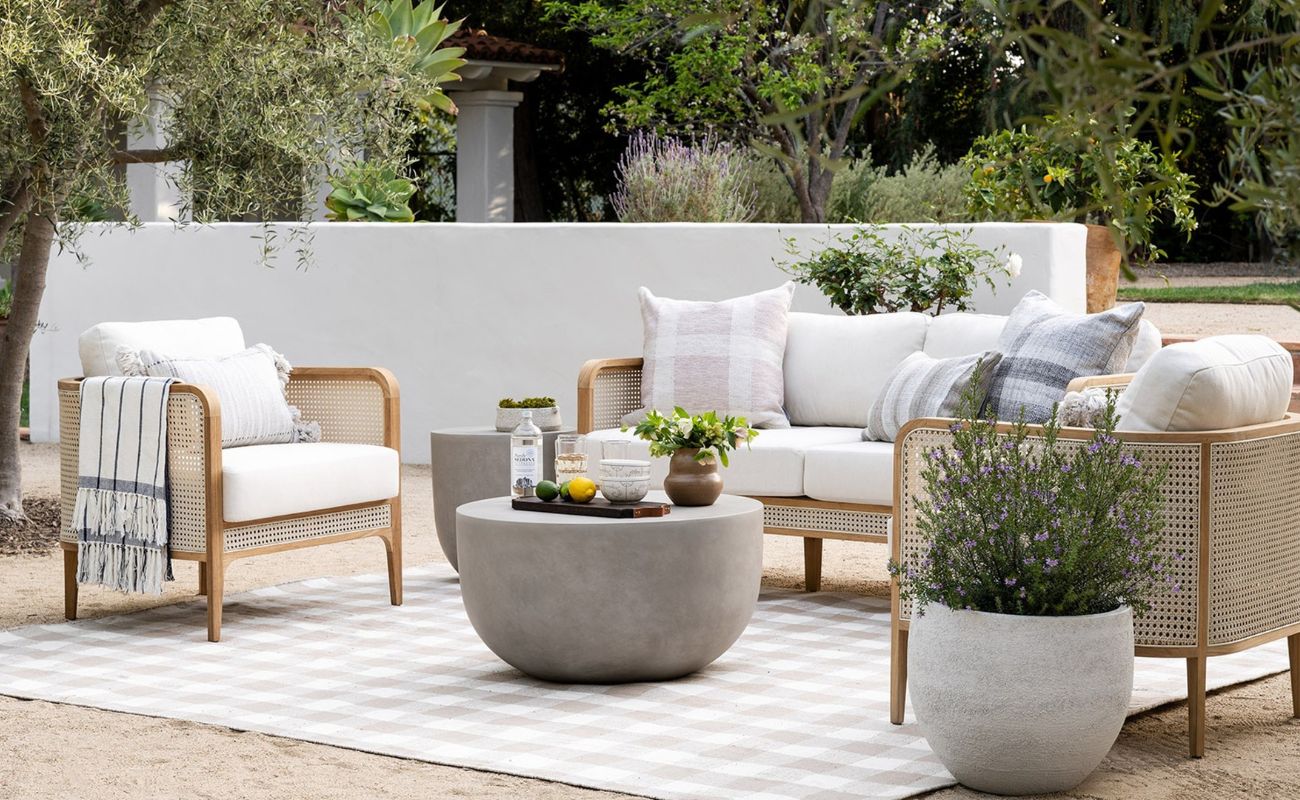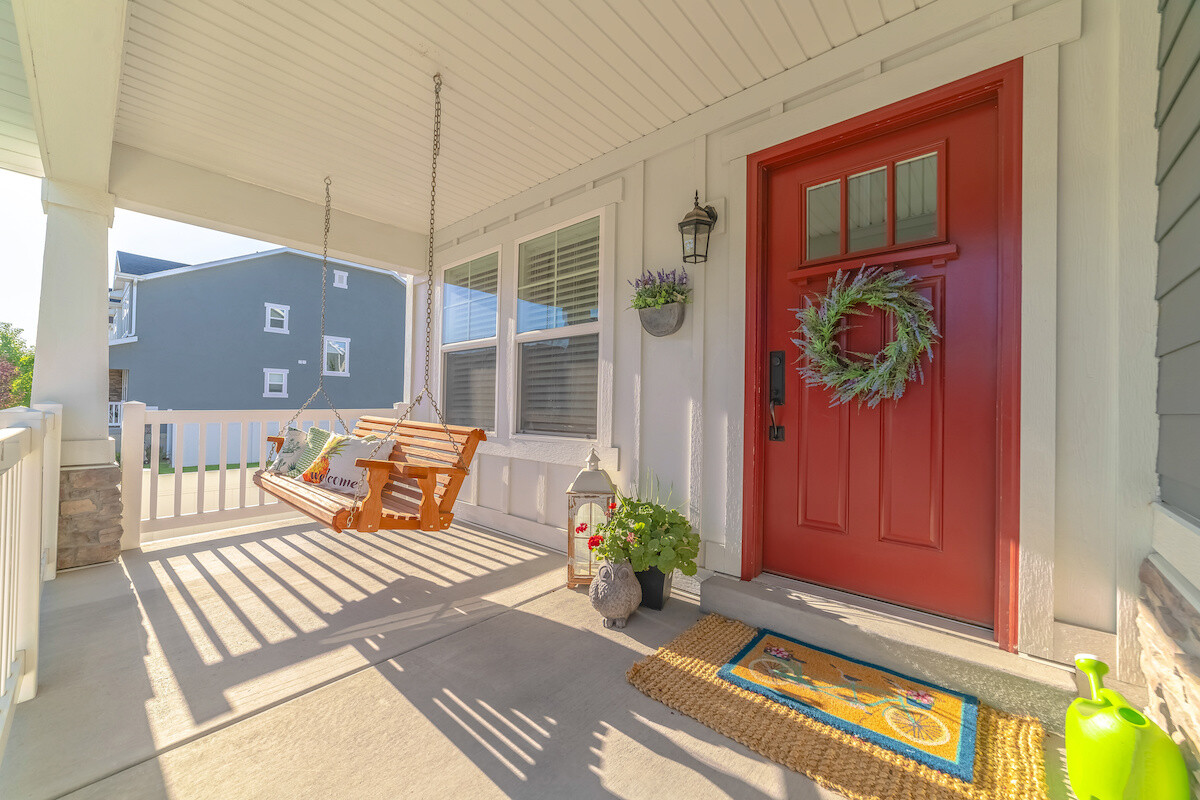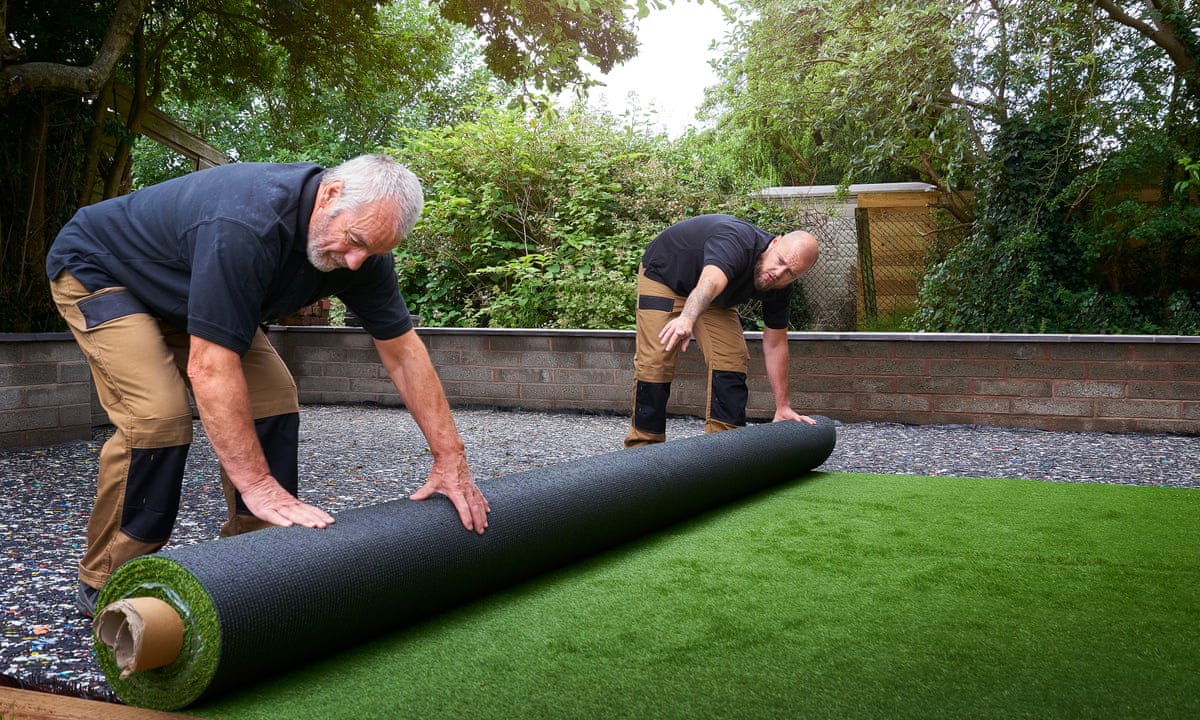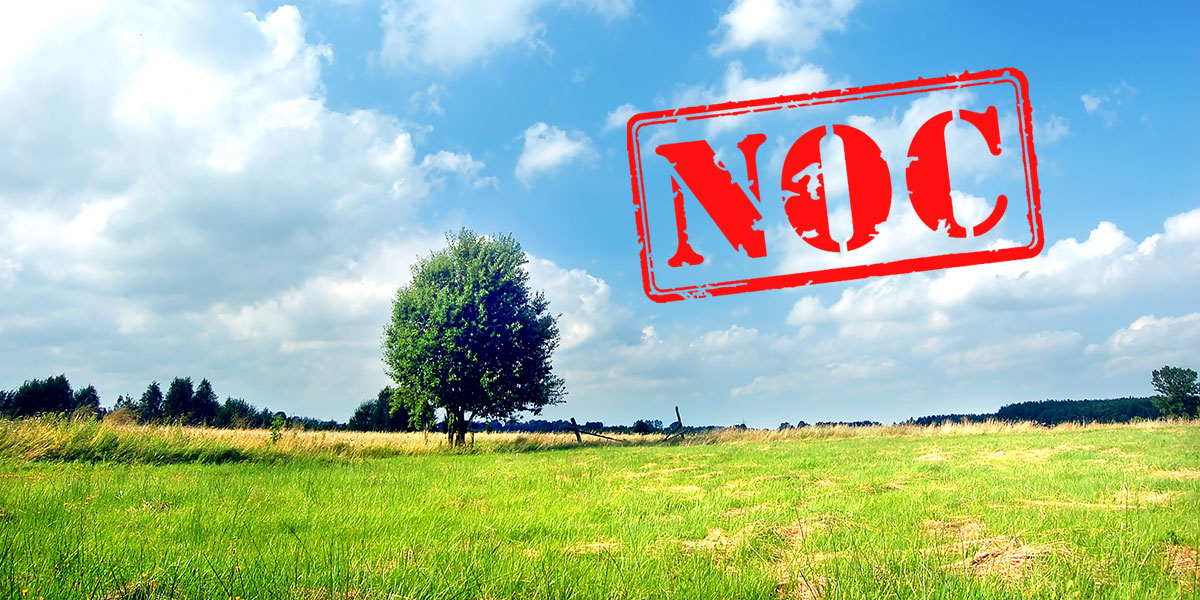Home>Furniture>Outdoor Furniture>What Does Patio Mean


Outdoor Furniture
What Does Patio Mean
Modified: March 7, 2024
Discover the meaning of "patio" and explore its connection to outdoor furniture. Find out how to create a stylish and functional outdoor living space with our expert tips and ideas.
(Many of the links in this article redirect to a specific reviewed product. Your purchase of these products through affiliate links helps to generate commission for Storables.com, at no extra cost. Learn more)
Introduction
Welcome to our comprehensive guide to patios, where we will explore everything you need to know about these outdoor living spaces. Whether you are a homeowner looking to create a relaxing oasis in your backyard, or a design enthusiast interested in learning more about outdoor furniture and decor, this article is for you.
A patio is a versatile and valuable addition to any home. It serves as an extension of your living space, allowing you to enjoy the outdoors while still having the comforts of home. Whether you want to host a dinner party, relax with a book, or gather with friends and family for a barbecue, a well-designed patio can provide the perfect setting.
But what exactly is a patio?
A patio is an outdoor area, typically paved or paved adjacent, that is used for dining, entertaining, and relaxation. It is usually located directly outside the main living area of a house, although it can also be detached or located in a courtyard or garden.
Patios can come in various shapes and sizes, from small intimate spaces to expansive outdoor entertainment areas. They can be made from a wide range of materials, including concrete, stone, brick, pavers, and wood. The choice of material will depend on factors such as budget, aesthetics, and climate.
Now that we’ve established what a patio is, let’s delve into the origin and history of these outdoor spaces, exploring how they have evolved over time and the cultural significance they hold.
Key Takeaways:
- Patios are versatile outdoor spaces that extend your home, offering relaxation, entertainment, and a connection to nature. They come in various types and materials, providing endless possibilities for creating your ideal outdoor oasis.
- Maintaining your patio is essential for its longevity and beauty. Regular cleaning, proper furniture care, and attention to weather protection ensure that your outdoor space remains inviting and enjoyable for years to come.
Definition of Patio
A patio is an outdoor area that is paved or paved adjacent, typically located directly outside the main living area of a house. It provides a space for dining, entertaining, and relaxation, allowing homeowners to enjoy the outdoors while still having the comforts of home.
Patios are designed to be an extension of indoor living spaces, providing a smooth transition from the inside to the outside. They are versatile spaces that can be used for various purposes, such as hosting a barbecue, lounging with a book, or gathering with friends and family.
While the size and layout of patios can vary, they are often characterized by a flat, hard surface that is commonly made from materials such as concrete, stone, brick, pavers, or wood. These materials offer durability and stability, ensuring that the patio can withstand the elements and regular use.
One of the defining features of a patio is its open-air nature. Unlike a deck, which is an elevated platform attached to the house, a patio is at ground level and does not have a roof. This allows for an unobstructed view of the sky and creates a sense of connection with the surrounding landscape.
Patios can be designed to complement the architectural style of the house and the surrounding environment. They can range from small intimate spaces, perfect for a cozy dinner for two, to larger areas that can accommodate a crowd for a party or social gathering.
In addition to their functional purposes, patios also offer aesthetic benefits. They can enhance the overall appearance of a property and create a welcoming outdoor ambiance. With the right design elements and landscaping, patios can become inviting retreats that reflect the homeowner’s personal style.
Now that we have established the definition of a patio, let’s explore the origin and history of these outdoor spaces, shedding light on how they have evolved over time and their cultural significance.
Origin and History of Patios
Patios have a rich history that can be traced back to ancient civilizations. The concept of outdoor living spaces dates back thousands of years, with evidence of paved courtyards and open-air gathering spaces found in ancient ruins around the world.
One of the earliest examples of patios can be seen in Pompeii, the ancient Roman city that was preserved in volcanic ash after the eruption of Mount Vesuvius in 79 AD. The ruins of Pompeii reveal the presence of paved courtyards or atriums in the villas and houses, where the Romans would engage in leisurely activities.
Throughout history, patios have played a prominent role in various cultures. In Islamic architecture, for example, inner courtyards known as “sahn” or “haramli” were common features of homes, palaces, and mosques. These courtyards were designed to provide privacy, as well as a place for relaxation and social gatherings.
In ancient Japan, traditional houses often featured “tsuboniwa,” small courtyard gardens that served as peaceful retreats and places of contemplation. These courtyards were designed to be viewed from the inside, with the patio acting as a bridge between the interior and the natural world outside.
The concept of outdoor living spaces gained significant popularity in the United States during the mid-20th century. The post-World War II era saw a rise in suburban housing developments, and homeowners began to embrace the idea of creating outdoor leisure areas.
During this time, the rise of the backyard barbecue culture led to a surge in demand for outdoor patios. Families wanted spaces where they could gather, cook, and enjoy the outdoors together. Patios became a focal point for entertaining and spending quality time with loved ones.
In contemporary times, patios have evolved to reflect modern design trends and lifestyles. Today, homeowners have a wide range of options to choose from when it comes to materials, styles, and amenities for their outdoor living spaces.
From sleek and minimalist concrete patios to cozy and rustic stone or wood patios, there is a design to suit every taste and architectural style. Patios are now seen as extensions of the home, with comfortable seating, outdoor kitchens, fire pits, and other features that allow for year-round enjoyment.
The cultural significance of patios extends beyond their practical and aesthetic value. They represent a connection to nature, a space for relaxation and socialization, and a way to appreciate the beauty of the outdoors.
Now that we’ve explored the origin and history of patios, let’s dive into the different types of patios that exist today, offering a variety of options for homeowners to create their ideal outdoor living space.
Types of Patios
Patios come in various shapes, sizes, and styles, allowing homeowners to customize their outdoor living spaces to suit their preferences and needs. Whether you prefer a simple and functional patio or an elaborate and luxurious design, there is a type of patio that can fulfill your vision.
Here are some popular types of patios:
- Concrete Patio: Concrete patios are a classic and versatile option. They can be poured in different shapes and sizes, providing a durable and low-maintenance outdoor space. Concrete patios can be left plain for a minimalist look or stamped and stained to mimic the appearance of other materials like stone or brick.
- Stone Patio: Stone patios exude natural beauty and timeless charm. They can be crafted from various types of stones such as slate, flagstone, or limestone. Stone patios offer a rustic and elegant look, and their irregular shapes and textures add visual interest.
- Paver Patio: Pavers are individual units made from materials like concrete, brick, or natural stone that can be laid in a variety of patterns. Paver patios are versatile, easy to install, and can be customized to create intricate designs. They provide a visually appealing and durable outdoor space.
- Wooden Deck: While not technically a patio, wooden decks are a popular choice for outdoor living areas. Decks are elevated platforms made from wood or composite materials, offering a designated space for relaxing, dining, and entertaining. Decks can be attached to the house or freestanding, creating a seamless transition from indoor to outdoor living.
- Covered Patio: A covered patio provides protection from the elements. It can be an extension of the house with a roof or an independent structure like a pergola or a gazebo. Covered patios allow for year-round enjoyment, shielding from rain and providing shade on hot sunny days.
- Enclosed Patio: An enclosed patio, also known as a sunroom or a screened-in porch, offers the benefits of an outdoor space while providing protection from insects and inclement weather. Enclosed patios can be fully glassed-in or have screens to allow for ventilation. They offer a more controlled environment for enjoying the outdoors.
These are just a few examples of the many types of patios available. Other options include rooftop patios, courtyard patios, poolside patios, and more. The choice of patio type will depend on factors such as budget, desired aesthetic, intended use, and the layout of your outdoor space.
Now that you have an understanding of the different types of patios, let’s explore the benefits of having a patio and how it can enhance your outdoor living experience.
Benefits of Having a Patio
Having a patio offers numerous benefits, making it a valuable addition to any home. From providing a space for relaxation and entertainment to increasing your property’s value, here are some of the key advantages of having a patio:
- Outdoor Living Space: A patio serves as an extension of your indoor living space, allowing you to enjoy the outdoors while still having the comforts of home. It provides a designated area where you can relax, dine, entertain, and spend quality time with family and friends.
- Improved Quality of Life: Spending time outdoors has been proven to have numerous health benefits. Having a patio gives you the opportunity to connect with nature, get fresh air, and enjoy the beauty of your surroundings. It can help reduce stress, improve mood, and promote a sense of well-being.
- Entertainment Possibilities: A patio provides an ideal setting for hosting social gatherings and events. Whether it’s a barbecue with friends, a birthday party, or a cozy outdoor movie night, having a patio gives you the perfect space to create lasting memories with your loved ones.
- Increased Property Value: A well-designed and functional patio can enhance the overall value of your property. Potential buyers often consider outdoor living spaces as a desirable feature when searching for a home. A thoughtfully designed patio can make your property more appealing and potentially increase its resale value.
- Versatility and Customization: Patios can be customized to suit your personal style and needs. Whether you prefer a sleek and modern design or a rustic and cozy ambiance, you can choose materials, furniture, and decor that reflect your taste. You also have the freedom to add amenities like outdoor kitchens, fire pits, or water features to enhance the functionality and aesthetics of your patio.
- Connection with Nature: A patio allows you to connect with the natural environment around you. Whether you have a lush garden, scenic views, or simply enjoy the feeling of the sun on your skin, being on a patio can provide a sense of tranquility and an escape from the pressures of daily life.
- Al Fresco Dining: One of the joys of having a patio is the opportunity to enjoy meals outdoors. Whether it’s a casual breakfast in the morning sun or a romantic dinner under the stars, dining on a patio adds a special touch to your culinary experiences.
- Privacy and Seclusion: Depending on the design and layout of your patio, it can offer a private and secluded space where you can retreat from the outside world. Adding screens, curtains, or pergolas can provide added privacy and create a cozy, intimate atmosphere.
These are just a few of the many benefits that come with having a patio. The advantages can vary depending on your specific needs and preferences, but one thing is certain – a well-designed patio can greatly enhance your outdoor living experience.
Now that we understand the benefits of having a patio, let’s explore the popular materials used in the construction of patios, allowing you to choose the best option for your outdoor space.
A patio is an outdoor space, usually paved, that is used for dining, entertaining, or relaxing. It is typically located adjacent to a house and may be covered or uncovered.
Read more: What Does Faucet Mean
Popular Materials for Patio Construction
When it comes to constructing a patio, choosing the right material is crucial. Different materials offer varying aesthetics, durability, maintenance requirements, and price points. Here are some popular materials commonly used for patio construction:
- Concrete: Concrete is a versatile and cost-effective option for patio construction. It can be poured into any shape or size and can be finished with various textures and colors. Concrete patios are durable, low maintenance, and can withstand different weather conditions.
- Stone: Natural stone, such as flagstone, limestone, or slate, creates a timeless and elegant look for patios. These stones come in various colors, patterns, and textures, adding a touch of natural beauty to any outdoor space. Stone patios are known for their durability and long lifespan.
- Pavers: Pavers are individual units made from materials like concrete, brick, or natural stone. They are available in a wide range of shapes, sizes, and colors, allowing for endless design possibilities. Pavers are easy to install, versatile, and can be replaced individually if damaged.
- Brick: Brick patios offer a classic and timeless appeal. They are known for their durability and ability to withstand heavy use. Brick patios can be laid in different patterns, such as herringbone or basketweave, to create visual interest. They also provide a warm and inviting atmosphere.
- Wood: Wood patios, typically made from hardwoods like teak, cedar, or redwood, provide a natural and warm aesthetic. Wood patios are often associated with decks, which are elevated platforms. Wood offers a natural beauty but requires more maintenance than other materials, such as regular sealing and staining to protect it from the elements.
- Composite Decking: Composite decking is a combination of wood fibers and recycled plastic. It offers the look of wood without the maintenance concerns. Composite decking is resistant to rot, splintering, and fading. It is also eco-friendly and available in a variety of colors and textures.
- Gravel: Gravel is an affordable and permeable option for patio construction. It provides a casual and natural look and can be an excellent choice for rustic or cottage-style spaces. Gravel patios require regular maintenance to prevent weeds and ensure an even surface.
Each material has its unique advantages, and the choice depends on factors such as budget, desired aesthetics, maintenance preferences, and the overall style of your outdoor space. It’s essential to consider these factors and consult with a professional to determine the best material for your patio.
Once you’ve chosen the material for your patio, there are various design considerations to ensure that your outdoor space is both functional and visually appealing. We’ll explore these design considerations in the next section.
Design Considerations for Patios
Designing a patio involves more than just choosing the right materials. It’s important to consider various factors to ensure that your patio meets both your functional and aesthetic requirements. Here are some key design considerations to keep in mind when planning your patio:
- Size and Layout: The size and layout of your patio will depend on the available space and how you plan to use it. Consider the activities you want to accommodate, such as dining, lounging, or entertaining, and ensure that there is enough space for furniture, walkways, and circulation.
- Location: Consider the location of your patio in relation to the house and the surrounding landscape. Think about factors like privacy, sunlight exposure, and views. You may want to position your patio to take advantage of natural elements or create a sense of enclosure with landscaping or screens.
- Functionality: Determine how you intend to use your patio and design it accordingly. If you plan to entertain frequently, consider incorporating a dining area, a cooking space, or a fire pit. If relaxation is a priority, create seating nooks or add a hammock or lounge chairs. Think about the flow of movement and ensure that there is ample space for guests to navigate comfortably.
- Shade and Shelter: Depending on your climate and personal preferences, you might want to incorporate shade options into your patio design. This can include an umbrella, a pergola, retractable awnings, or a covered structure like a gazebo. Shade elements not only provide relief from the sun but also add a decorative touch to your patio.
- Materials and Finishes: Choose materials that complement your home’s architecture and create the desired atmosphere. Consider not only the flooring material but also the finishes for walls, steps, and borders. Pay attention to the colors, textures, and patterns of the materials to ensure they harmonize with the overall aesthetic of your outdoor space.
- Landscaping and Greenery: Incorporating plants, trees, and landscaping elements around your patio can enhance its visual appeal and create a soothing environment. Consider adding potted plants, vertical gardens, or flower beds to add pops of color and character. Ensure that any plantings are compatible with the amount of sunlight and maintenance requirements of your patio.
- Lighting: Outdoor lighting is crucial for both functionality and ambiance. Consider various types of lighting, such as pathway lights, string lights, wall sconces, or uplighting for trees and architectural features. Lighting can create a warm and inviting atmosphere, as well as provide safety and security during nighttime use.
- Accessories and Decor: Add personal touches and create a cohesive look by incorporating accessories and decor. This can include outdoor rugs, throw pillows, lanterns, artwork, or even an outdoor sound system. Choose elements that reflect your style and create a welcoming and inviting atmosphere.
By considering these design aspects, you can create a patio that not only meets your practical needs but also reflects your personal style and enhances your outdoor living experience. Now, let’s delve into the world of patio furniture and decor, which play a crucial role in making your outdoor space comfortable and inviting.
Patio Furniture and Decor
Patio furniture and decor play a significant role in creating a comfortable and inviting outdoor living space. They not only provide functionality but also add style and personality to your patio. Here are some key aspects to consider when selecting patio furniture and decor:
- Seating Options: Start by considering the seating options that will best suit your needs. This can include lounge chairs, sofas, loveseats, dining sets, or even hammocks. Consider the number of people you want to accommodate and the activities you plan to do on your patio to determine the appropriate seating arrangements.
- Comfort and Durability: Look for furniture that is both comfortable and durable. Opt for cushions and upholstery that are weather-resistant and easy to clean. Choose materials that can withstand outdoor elements such as sun, rain, and humidity, and avoid pieces that may warp or degrade over time.
- Material Choices: Patio furniture comes in various materials, each with its unique characteristics. Common options include aluminum, wrought iron, teak, resin wicker, and plastic. Consider factors such as maintenance requirements, durability, and how well the material complements the overall aesthetic of your patio.
- Tables and Surfaces: In addition to seating, consider the need for tables and surfaces. This can include coffee tables, dining tables, side tables, or even bar carts. Ensure that these surfaces are sturdy and can withstand outdoor conditions. Look for materials that are easy to clean and maintain.
- Shade Solutions: If your patio lacks natural shade, consider incorporating shade solutions into your furniture selection. This can be in the form of umbrellas, canopy structures, or pergolas with retractable fabric covers. Shade solutions not only provide relief from the sun but also enhance the functionality of your patio.
- Accessories and Decor: Add personality and style to your patio with accessories and decor. This can include outdoor rugs, throw pillows, cushions, lanterns, string lights, artwork, potted plants, or even a water feature. Choose elements that reflect your personal taste, create a cohesive look, and make your patio inviting and visually appealing.
- Weather Protection: Consider the need for weather protection for your patio furniture. If your patio is not covered, it’s advisable to invest in furniture covers to protect your pieces from rain, UV rays, and dust. Proper maintenance and storage during extreme weather conditions can prolong the lifespan of your furniture.
- Flexibility and Modularity: Choose furniture options that offer flexibility and modularity. This allows you to rearrange and adapt your seating arrangements based on different occasions or preferences. Look for pieces that are lightweight, easy to move, and offer modular configurations for greater versatility.
Remember, when selecting patio furniture and decor, aim for a cohesive and harmonious look that complements your overall outdoor space. Consider the color palette, materials, and aesthetic style that you want to achieve.
By carefully selecting and arranging patio furniture and incorporating decorative elements, you can create an outdoor sanctuary that reflects your personal style and provides an inviting space for relaxation, entertainment, and enjoyment.
Now that we’ve explored patio furniture and decor, let’s move on to the important topic of maintaining and caring for your patio, ensuring its longevity and optimal condition.
Maintenance and Care for Patios
Maintaining and caring for your patio is essential to ensure its longevity, functionality, and aesthetic appeal. By following proper maintenance practices, you can keep your patio in optimal condition and extend its lifespan. Here are some tips for maintaining and caring for your patio:
- Cleaning: Regular cleaning is essential to keep your patio looking its best. Sweep or use a leaf blower to remove debris, leaves, and dirt from the surface. Depending on the material of your patio, you may need to use mild soap and water or a specialized cleaner to remove stains or grime. Avoid using abrasive materials or harsh chemicals that may damage the surface.
- Sealing: Some patio materials, such as concrete or natural stone, may require sealing to protect them from stains, moisture, and harsh weather conditions. Check the manufacturer’s recommendations or consult with a professional to determine if your patio needs sealing and how often it should be done. Follow the proper application instructions for the sealant.
- Weed Control: Prevent weed growth by regularly inspecting and removing any weeds that may appear in the cracks or joints of your patio. Use a weed killer or an eco-friendly solution to inhibit weed growth. Additionally, consider installing landscape fabric or a weed barrier before laying the patio to minimize weed intrusion.
- Preventing Stains: Protect your patio from stains by quickly cleaning up any spills, especially from substances like oil, grease, or food. Place coasters or placemats under pots, furniture, and other items that may leave marks or damage the surface. Consider using mats or rugs in high-traffic areas to protect the patio from excessive wear and tear.
- Snow and Ice Removal: In regions with cold winters, take precautions to prevent damage from snow and ice. Avoid using metal shovels or sharp tools that can scratch or chip the surface. Use plastic shovels or snow blowers with rubber paddles to remove snow. Apply de-icing agents sparingly, as some chemicals may be harmful to certain patio materials.
- Regular Inspections: Periodically inspect your patio for any signs of damage, such as cracks, loose pavers, or uneven surfaces. Address any issues promptly to prevent further damage and ensure the safety of your outdoor space. Consult with a professional if you notice significant damage that requires repairs or replacements.
- Furniture Maintenance: If you have patio furniture, follow the manufacturer’s instructions for maintenance and care. Clean cushions and upholstery regularly, and store them indoors or in protective covers during inclement weather or extended periods of non-use. Wipe down and clean metal or wood furniture to prevent rust or deterioration.
- Tree and Plant Maintenance: If you have trees or plants near your patio, regularly trim branches or foliage that may pose a risk of damage or excessive leaf debris. This will help minimize the need for frequent cleaning and prevent potential damage to the patio surface.
Remember, proper maintenance and care for your patio are ongoing tasks. Regular cleaning, addressing any issues promptly, and following manufacturer recommendations will help preserve the beauty and functionality of your outdoor space.
By investing time and effort in proper maintenance, you can enjoy your patio for years to come. Now, let’s conclude this comprehensive guide to patios with a summary of the key points we’ve covered.
Read more: What Does Chandelier Mean
Conclusion
In conclusion, patios are versatile and valuable outdoor living spaces that provide a seamless transition between the comforts of home and the beauty of the outdoors. Whether you want to create a tranquil retreat for relaxation, host memorable gatherings, or simply enjoy meals al fresco, a well-designed patio can fulfill your desires.
We explored the definition of patios as outdoor areas directly adjacent or paved adjacent to the main living area of a house. We learned about the rich history of patios, stretching back to ancient civilizations and continuing to evolve in modern times.
Understanding the types of patios available allows you to customize your outdoor space to match your preferences and needs. From concrete and stone patios for a classic look, to paver patios for versatility, and wooden decks for an elevated experience, there are options to suit every style.
We also explored the numerous benefits of having a patio. From expanding your living space and increasing property value to enjoying outdoor activities and fostering a connection with nature, patios truly enhance your quality of life.
Choosing the right materials for patio construction is crucial for aesthetics and durability. Options such as concrete, stone, pavers, brick, wood, and composite decking offer different looks and maintenance requirements, allowing you to create the perfect outdoor oasis.
Designing your patio requires careful consideration of elements such as size, layout, location, and functionality. Pay attention to the materials, landscaping, lighting, and accessories that will transform your patio into a welcoming and inviting space that reflects your personal style.
Once your patio is designed, selecting the right furniture and decor is essential. From comfortable seating options to shade solutions, tables, and accessories, patio furniture and decor add both functionality and personality to your outdoor space.
Maintaining and caring for your patio ensures its longevity and optimal condition. Regular cleaning, sealing, weed control, stain prevention, and inspections are necessary to keep your patio looking its best. Additionally, proper maintenance of your furniture and consideration of weather protection contribute to preserving the beauty and functionality of your patio.
By considering all these aspects, you can create a patio that serves as an oasis of comfort, style, and relaxation right in your own backyard.
So, whether you’re sipping a morning coffee as the sun rises, hosting a lively gathering with friends, or simply enjoying quiet moments surrounded by nature, let your patio be the backdrop for countless cherished memories.
Frequently Asked Questions about What Does Patio Mean
Was this page helpful?
At Storables.com, we guarantee accurate and reliable information. Our content, validated by Expert Board Contributors, is crafted following stringent Editorial Policies. We're committed to providing you with well-researched, expert-backed insights for all your informational needs.














0 thoughts on “What Does Patio Mean”